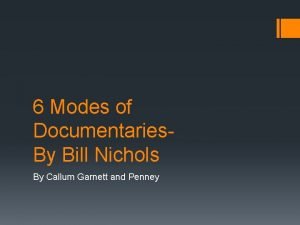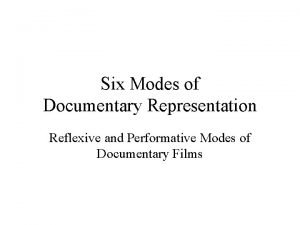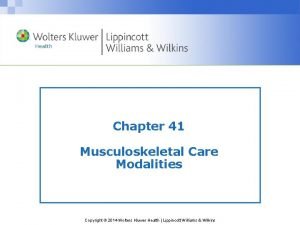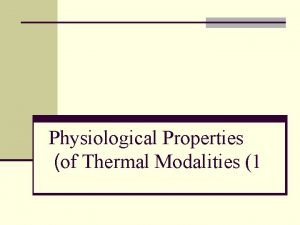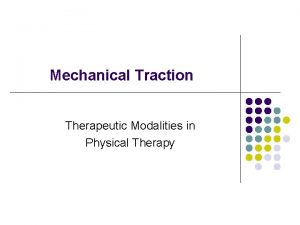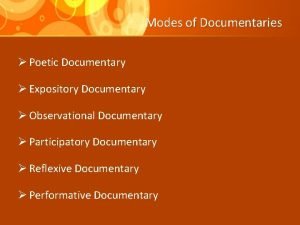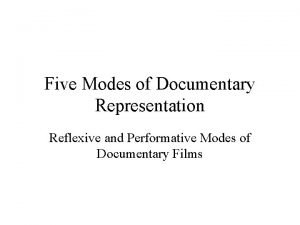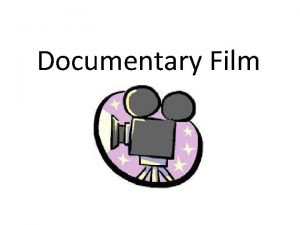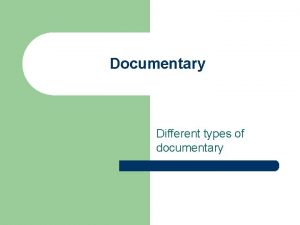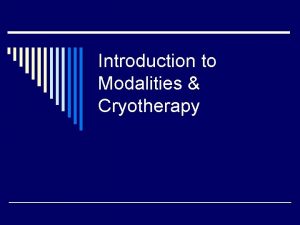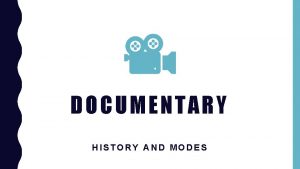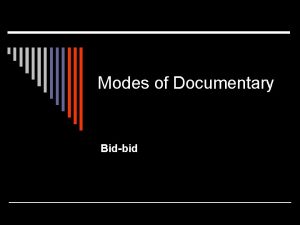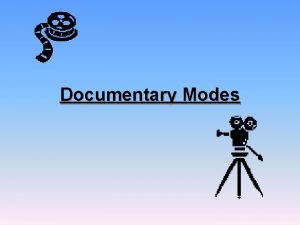DOCUMENTARY MODALITIES NICHOLS INTRODUCTION TO DOCUMENTARY Six modes









- Slides: 9

DOCUMENTARY MODALITIES

NICHOLS’ INTRODUCTION TO DOCUMENTARY • Six modes of representation: • Poetic • Expository • Participatory • Observational • Reflexive • Performative

POETIC • Instead of using traditional linear continuity to create story structure, the poetic documentary filmmaker arrives at its point by arranging footage in an order to evoke an audience association through tone, rhythm, or spatial juxtaposition. • ‘A subjective interpretation of the subject’ – essentially, it is biased • Certain information is left out in order to support this point of view

EXPOSITORY • The documentor speaks directly to the viewer, through the use of tools such as voice over and subtitles to create a strong argument. • In this mode, images are used to support the message being conveyed by the filmmaker. • Is it as interesting to simply list the ‘facts’?

OBSERVATIONAL • Emerging in the 60’s, Direct Cinema embraced the idea of the observational documentary format • The camera captures the ‘truth’ by letting the camera capture its subjects uninterrupted • Arguably more of an ‘unbiased’ methodology • Think: fly on the wall

PARTICIPATORY • In opposition to the direct cinema approach, Participatory captures the idea that the filmmaker actively participates with the subjects – usually by being interviewed • The filmmaker has to have a certain level of influence • This leads to artificial events being created to support the overarching narrative

REFLEXIVE • Reflexive documentary is not about the relationship with the filmmaker and the subject, but rather the filmmaker and the audience • This mode uses specific information to guide the audience to a point of view, without much interpretation for them.

PERFORMATIVE • Showing up in the 1980 s along with the reflexive sub-genre, the performative documentary emphasizes truth as relative, favoring a personal take over the objective lens. • Very often this takes the form of autobiography: highlighting the plight of social minorities and groups.

AZ OF NI
